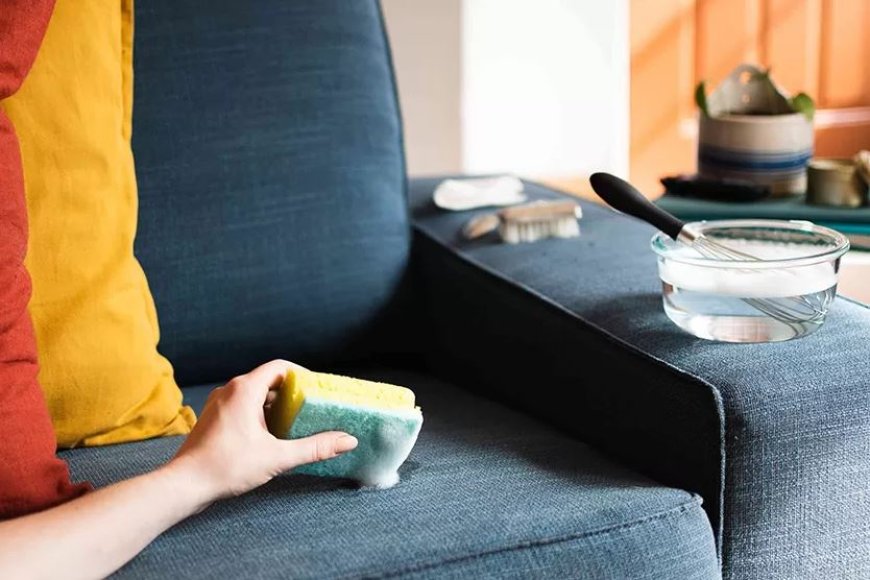Fastest Ways to Remove Stains from Your Sofa

Dealing with an unsightly stain on your beloved sofa can be a disheartening experience. Whether it's a spilled cup of coffee, a rogue wine splash, or a muddy paw print, the immediate concern is how to get rid of it – and fast! While some stains require professional intervention, many can be tackled quickly and effectively at home if you act promptly and use the right techniques. This guide will walk you through the fastest ways to achieve successful sofa stain removal, helping you restore your furniture's pristine look.
The Golden Rule of Sofa Stain Removal: Act Swiftly!
The single most crucial factor in successful sofa stain removal is speed. The longer a stain sits, the more it penetrates the fabric fibers, making it significantly harder to remove. As soon as you notice a spill, resist the urge to rub it in, as this can spread the stain and push it deeper. Instead, blot the excess liquid immediately with a clean, dry cloth or paper towel. Gentle blotting is key; pressing firmly can transfer the stain to other areas. For solid messes, like food particles or mud, carefully scrape off as much as possible with a dull knife or spoon before proceeding with any cleaning solution.
Understanding Your Sofa's Fabric: A Critical First Step
Before you reach for any cleaning product, it's absolutely vital to understand your sofa's fabric type. Different materials react differently to various cleaning agents. Look for a care tag, usually located under a cushion or on the underside of the sofa. This tag will have codes that indicate the recommended cleaning method:
- "W" for Water-Based Cleaners: This means you can safely use water-based solutions.
- "S" for Solvent-Based Cleaners: This indicates the fabric requires water-free solvents.
- "WS" for Both Water and Solvent-Based Cleaners: You have more flexibility with this type.
- "X" for Professional Cleaning Only: This means no home cleaning is recommended, and you should call in the experts.
Ignoring these codes can lead to irreversible damage, such as shrinking, discoloration, or watermarks. Always test any cleaning solution on an inconspicuous area of the sofa first, like the back or underneath a cushion, to ensure it doesn't cause any adverse reactions.
Tackling Common Stains with Kitchen Staples
You'd be surprised how many everyday household items can be incredibly effective for sofa stain removal. For fresh spills, a simple mixture can often do the trick. For liquid-based stains like coffee, juice, or soda, start by mixing one tablespoon of dish soap with two cups of cool water. Dip a clean white cloth into the solution, wring it out so it's damp (not soaking wet), and gently blot the stain from the outside in. Continue blotting with a clean section of the cloth until the stain is gone. Finish by dabbing the area with a cloth dampened with plain water to rinse, then blot dry.
For grease stains, cornstarch or baking soda can be your best friend. Sprinkle a generous amount of either powder directly onto the fresh grease stain. These powders are excellent at absorbing oils. Let it sit for at least 15-20 minutes, or even longer for tougher stains. The powder will absorb the grease. Once the powder has absorbed the grease, simply vacuum it up. You might need to repeat this process a few times for complete sofa stain removal. Afterward, you can gently dab the area with a mild dish soap solution if any residue remains.
The Power of Vinegar and Baking Soda for Persistent Marks
When you're facing more stubborn or set-in stains, a paste of baking soda and vinegar can be a surprisingly effective solution for many fabric types (remember to check your fabric code!). Mix a small amount of baking soda with enough white vinegar to form a paste. Apply this paste directly to the stain and let it sit for about 10-15 minutes. You'll likely see some fizzing as the baking soda and vinegar react, which helps to lift the stain. Once the fizzing subsides, gently scrub the area with a soft brush or a clean cloth. After scrubbing, use a clean, damp cloth to wipe away the paste and the stain. Blot dry thoroughly. This method is particularly good for odors as well as stains.
When to Call in the Experts: Knowing Your Limits
While these DIY methods are excellent for quick fixes, there are times when professional sofa stain removal is the safest and most effective option. If you're dealing with very old, deeply embedded stains, or if your sofa is made of a delicate or "X" coded fabric, attempting to clean it yourself could cause more harm than good. Furthermore, large stains that cover a significant portion of the sofa, or stains from unknown substances, are best left to professionals who have specialized equipment and cleaning solutions to safely and effectively remove them without damaging your upholstery.
For guaranteed sofa stain removal and a truly refreshed look, consider reaching out to the experts. Our team at Pro Sofa Clean has the knowledge, experience, and professional-grade tools to tackle even the most challenging stains, ensuring your sofa looks its best without any risk of damage. Don't let a stubborn stain diminish the beauty of your living space – let us restore it for you! Contact Pro Sofa Clean today for a consultation and discover the difference professional cleaning can make.
























































































































































